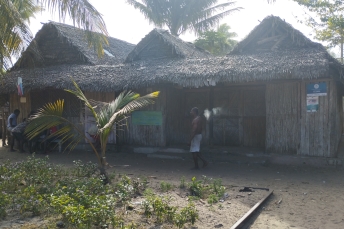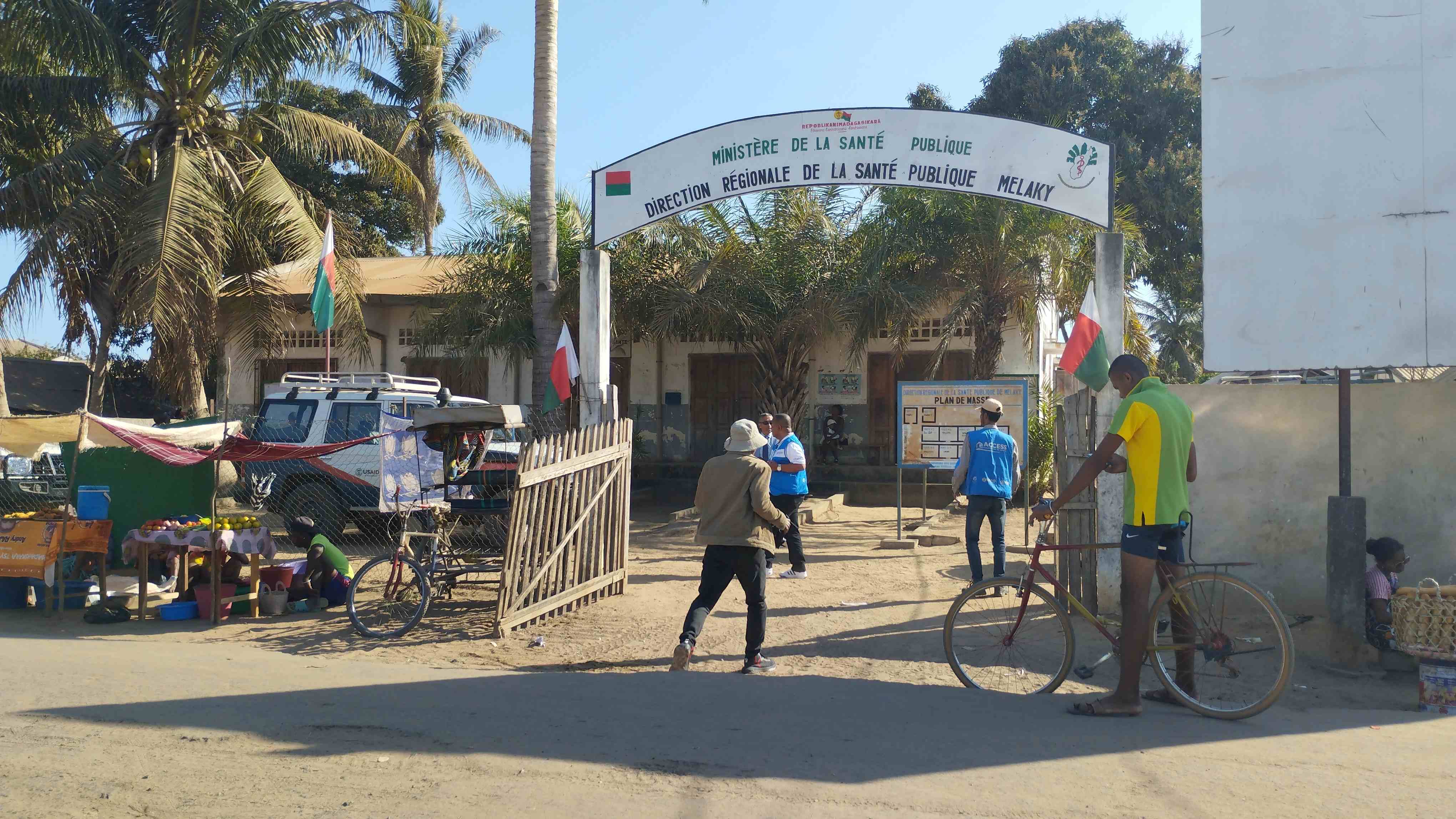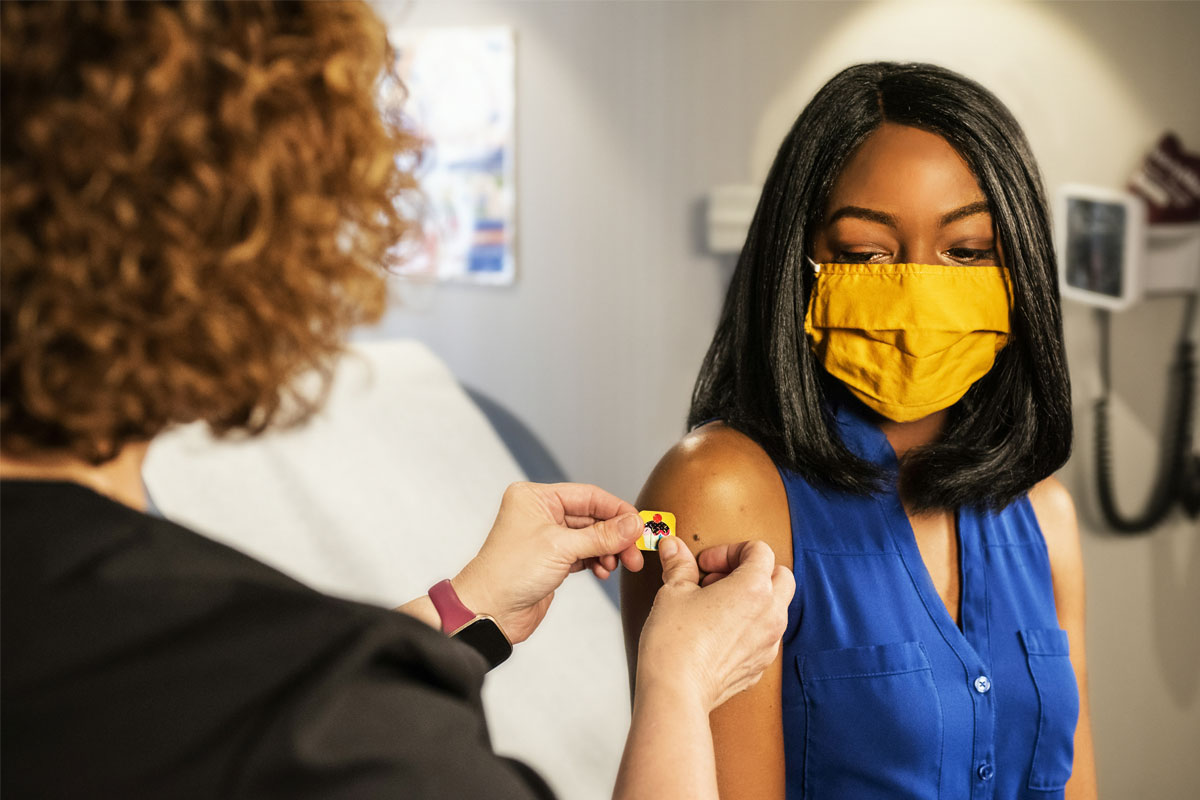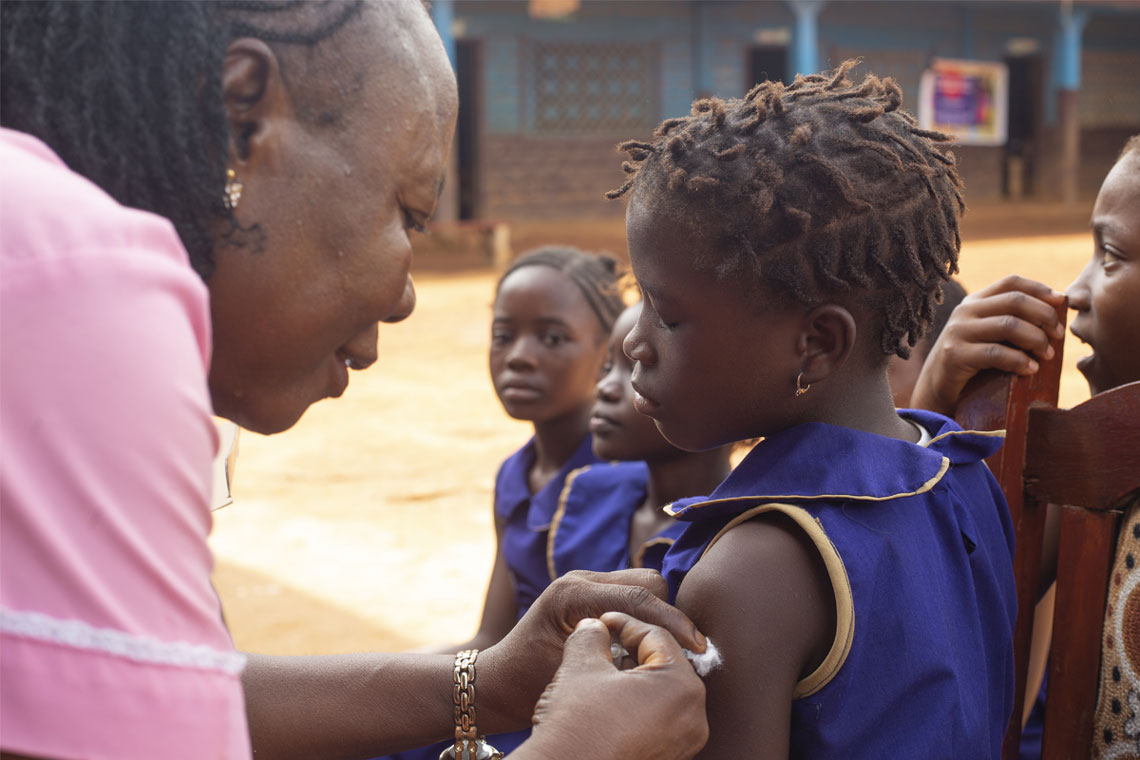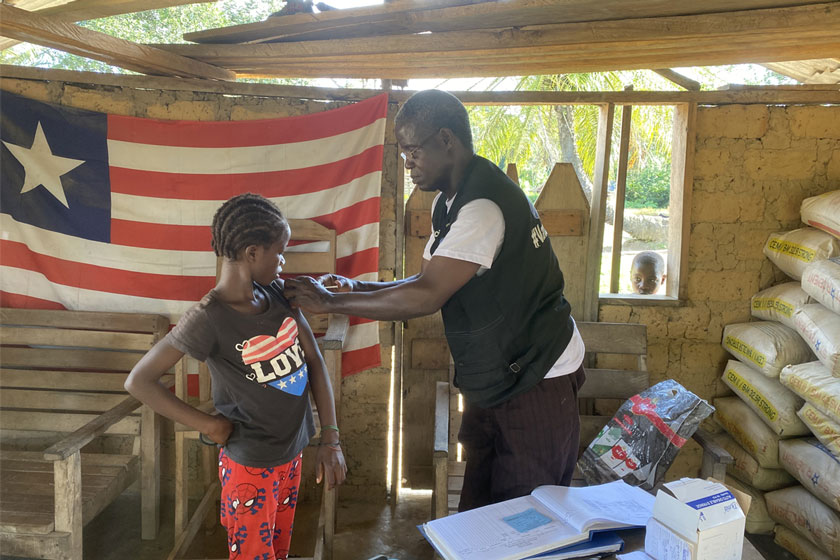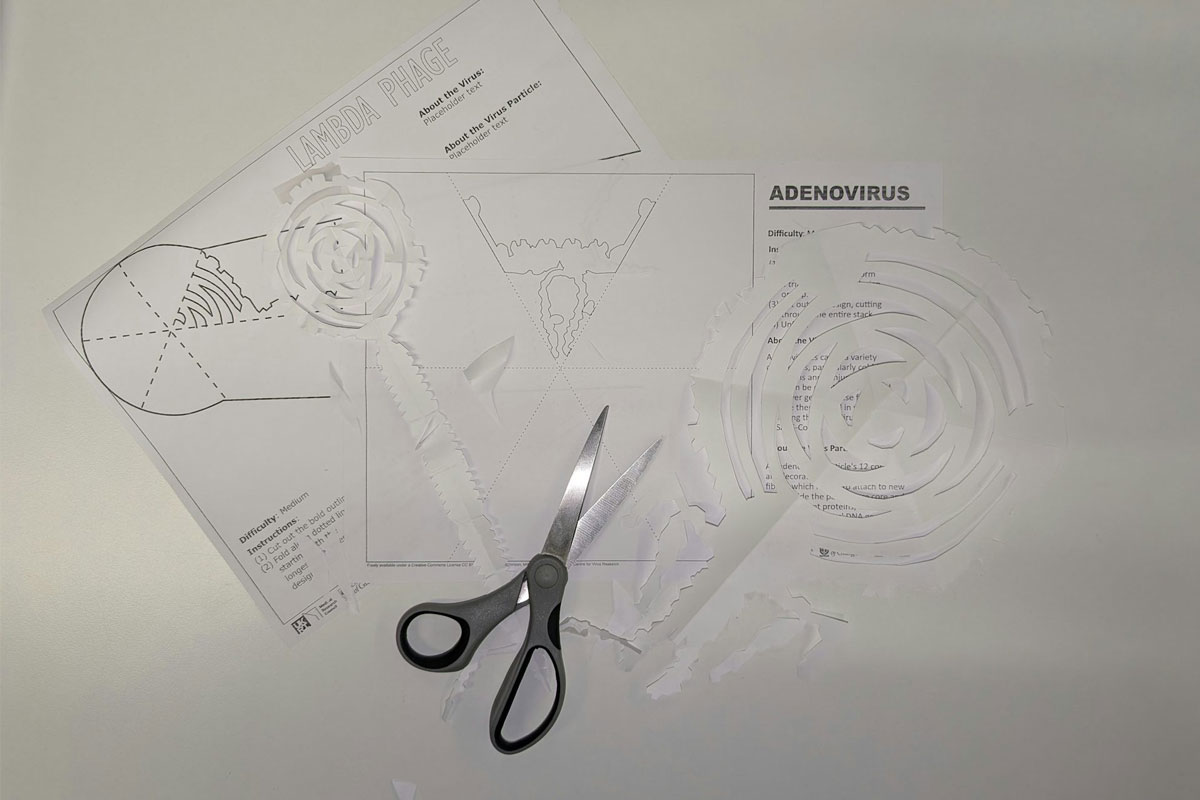Drone-borne vaccines make landfall in southwestern Madagascar
Since October 2024, with funding from Gavi, drones have been shuttling vaccines to remote health centres, sparing health workers a sometimes perilous land journey.
- 11 February 2025
- 5 min read
- by Rivonala Razafison

Marie Totohery Velonarivo, a nurse and head of the Level 2 Basic Health Centre (CSB II) in Bereketa, relives one particularly tough evening at work. “On my way back from a meeting in Sakaraha, I was attacked on the road,” he says.
The isolated and rugged roads of rural part of Atsimo-Andrefana in southwestern Madagascar are not only a logistical nightmare, but also a dangerous zone where gangs sometimes target healthcare workers on duty.
In these remote areas, ensuring access to healthcare is a daily struggle. Isolation, lack of infrastructure, harsh weather conditions, and insecurity make everything more difficult: from delivering vaccines, to distributing medicine, to monitoring patients. As a consequence, there are supply shortages, patchy access to healthcare, and children here are more likely to miss out on vaccines.
To address these challenges, a skyborne solution – already transforming care in other parts of Madagascar – has been extended into this region: since late last year, drones have been delivering vaccines and medical supplies directly to 12 districts across three regions, with key launch sites in Sakaraha (Atsimo-Andrefana) and Vangaindrano (Atsimo-Atsinanana).
This initiative, led by the Ministry of Public Health, the NGO PSI Madagascar, and their partners, including Gavi, saw a first test flight take place on 2 October2024, transporting a payload of 1,030 vaccine doses. Since then, the operation has become routine: each drone can transport up to 10 kg of cargo for distances under 50 km, and 5 kg for routes between 50 and 100 km.
“The journey takes only half an hour,” explains Miranto Andrianaly, the project’s marketing and communication supervisor. Avoiding impassable roads and the risk of attacks, these small flying machines ensure safe and rapid deliveries, even during the peak of the rainy season.
From scepticism to acceptance
At first, the flying vaccine couriers were met with suspicion. “People were hesitant,” admits the head of CSB II in Bereketa. Some were sceptical, while others questioned whether these flying devices were really carrying vaccines.
A large-scale mobilisation effort was needed to overcome these doubts. Political, administrative, religious and traditional authorities were involved. Local influencers helped spread the message. “We explained to the population the impact of this technology on human health,” says Andrianaly.
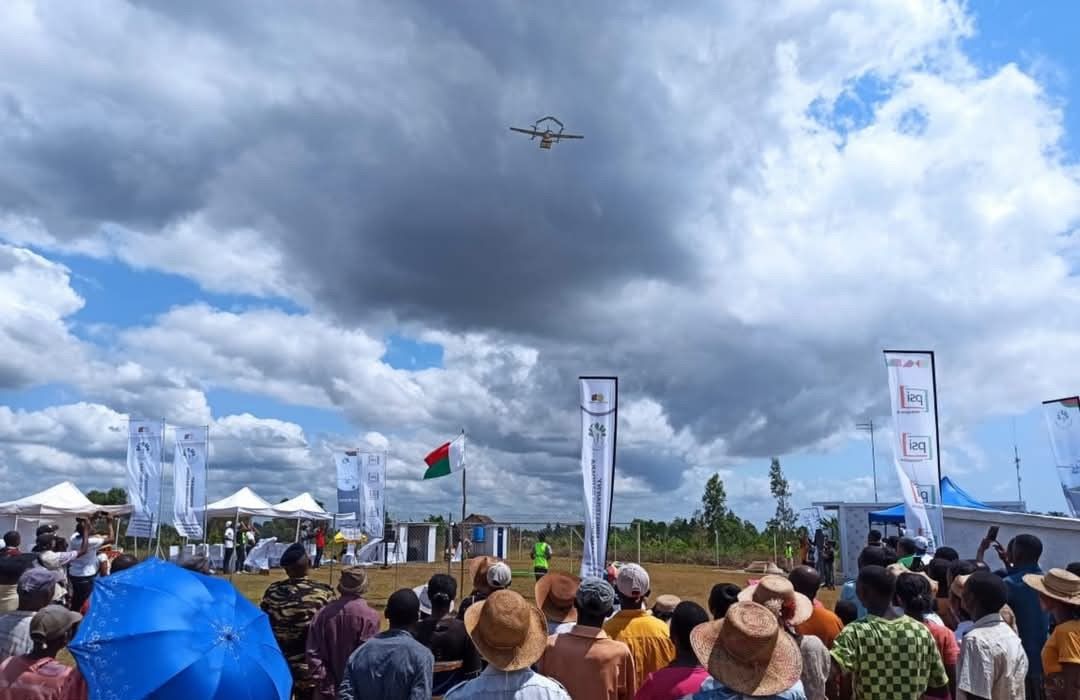
Credit: PSI Madagascar
One event sped up the transition: a measles vaccination campaign that coincided with the first drone delivery. “People saw with their own eyes that the packages actually contained vaccines, medicines, and healthcare supplies – nothing else,” explains Wellydo Rocky Walfred Rakotovelo, the drone logistics supervisor for the Atsimo-Andrefana region.
Now, on delivery days, mothers gather at the CSB with their children, waiting for the arrival of the vaccines.
A healthcare revolution
The drone project is not limited to Sakaraha. Since 2019, the technology was proven effective in northeastern Maroantsetra before being expanded in 2022 to the Atsinanana and Sava regions. In 2023, the Melaky region and the city of Maintirano joined the initiative.
Since 2024, with financial support from Gavi, two drone launch sites have been set up to support medical deliveries – one in Sakaraha (Atsimo-Andrefana) and the other in Vangaindrano (Atsimo-Atsinanana). These drones transport vaccines to 12 districts across three regions.
In Atsimo-Andrefana, the project serves five districts – Sakaraha, Toliara II, Morombe, Betioky, and Ankazoabo Sud – covering 68 Basic Health Centres (CSBs).
In Atsimo-Atsinanana, as well as the Anosy and Ihorombe regions, seven districts benefit from the initiative: Vangaindrano, Farafangana, Midongy Atsimo, Befotaka, Iakora, Vondrozo, and Taolagnaro, with 120 CSBs identified.
In Vangaindrano district alone, 44 CSBs have been approved and are currently receiving drone deliveries.
Some of the most remote CSBs, located more than 100 km from the launch site, are beyond the drones’ direct range. To reach them, designated relay CSBs serve as drop-off points, where vaccines and medical supplies are delivered before being distributed to more isolated health centres.
It’s not just vaccines that are getting a lift into harder-to-reach areas. “Drones play a significant role in the fight against malaria, HIV and tuberculosis,” highlights a project official. In some areas like Ranomafana-Ifanadiana, they also deliver family planning products.
Have you read?
Overcoming challenges
Despite the project’s success, obstacles remain. Weather conditions are a major factor: “The wind picks up in the afternoon, and sometimes there’s hail,” says Rakotovelo. To avoid these difficulties, most flights are scheduled for the morning. And if the 40 weekly flights cannot be completed due to bad weather, they are rescheduled over the weekend. “The Ministry team is always kept informed of any contingencies,” he adds.
New districts are awaiting training – a necessary step before drones can be deployed for healthcare. The goal is to cover all the districts in Atsimo-Andrefana and Atsimo-Atsinanana by the end of the year.
To coordinate these efforts, a health technical working group (GTT Santé) was created on 26 September 2024, with Gavi as an integral part of the initiative.
What began as a pilot experiment is now transforming how healthcare reaches Madagascar’s most remote populations. The story of Velonarivo and many other frontline health professionals illustrates this revolution: thanks to drones, they can finally focus on their primary mission – providing care – without having to risk dangerous journeys on the road.
